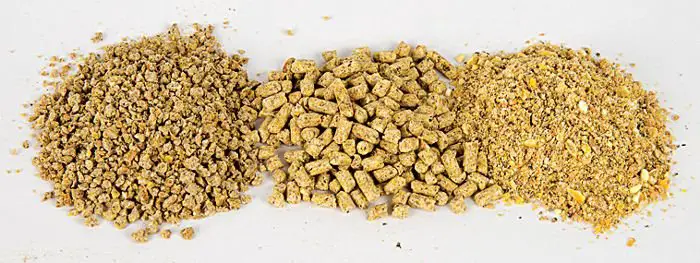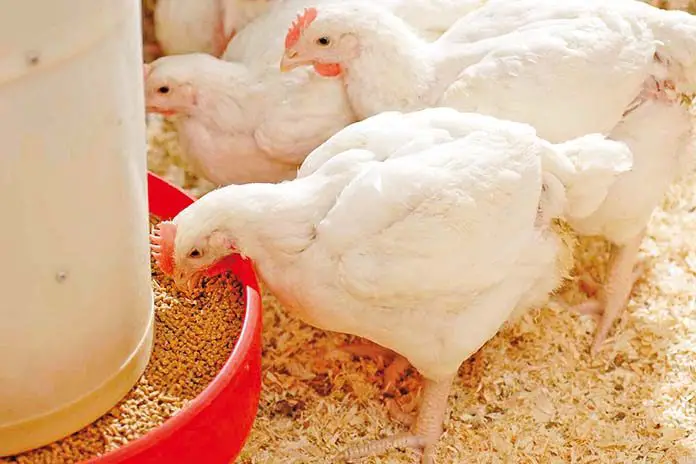Cattle farming is either run on an intensive or extensive system depending on the amounts of feed and land area available. In intensive systems, the cattle are raised on a small piece of land and almost all feed is brought to them, this can significantly reduce the profitability of the enterprise if the feed resources are expensive or not locally available. Farmers are always looking for ways to feed their livestock as cheaply as possible and this normally involves looking at novel, and/or locally available least utilized feed resources. By-products or rejects from human food processing are fed extensively across the globe to cattle, however, some are not as beneficial and can pose a health risk to cattle. One such potential feed resource is rhubarb, rhubarb carries more risk than its worth, and although cows can eat the stalks the risk of poisoning is quite high.
Contents
What Is Rhubarb?
Rhubarb is grown for its fleshy and edible leaf stalks, however, the leaves themselves contain high levels of oxalic acid and other compounds that make them inedible. It is best to avoid eating damaged rhubarb as it could be high in oxalic acid which moves from the leaves after the plant is damaged. Rhubarb is usually consumed after cooking with plenty of sugar, it can be consumed raw but has a very tart taste which most people do not like. Rhubarb is best paired with other sweet foods like fruits and is not really consumed on its own.
Cow Digestion System
Cattle have a four-chamber stomach called the rumen, where microorganisms present in the rumen break down fiber from grazing into beneficial volatile fatty acids that are then absorbed and utilized by the cow. These bacteria and fungi also produce vitamins that can be utilized by cows, which is why cattle vitamin supplementation requirements are quite low. However, for this system to continue and thrive there should be a constant supply of high-fiber forage that the microorganisms can consume. The choice of what to feed cows is hence determined mostly y this factor as little fiber can lead to the rumen stopping working leading to rumen stasis, bloat, and death. Cows will graze on different forages according to their requirements and will avoid less beneficial and toxic forages.
Typical Nutrient Profile of Rhubarb
The edible parts of the rhubarb plant, the stalks, have a very high water content of over 94% and very little else in terms of other key nutrients like energy and protein. It is, however, rich in some vitamins which could be helpful for cattle like vitamins K and C. In all the plant is very nutrient poor containing mostly water and some vitamins and no other micro or macronutrients. Rhubarb leaves contain toxic compounds such as oxalic acid and nephrotoxin and care should be taken when consuming rhubarb to avoid the leaves. Coupled with the high risk of poisoning, and low fiber, rhubarb is not a really attractive choice for feeding cattle.
Challenges of Feeding Rhubarb to Cows
Rhubarb is not widely grown across the world which makes it expensive to consider feeding to cattle as an alternative feed. Alternatives should be readily available and at an affordable cost for them to be viable options for feeding cows profitably. Due to the high price of rhubarb, most rhubarb available for feeding to cows would be rejected as not fit for human consumption, however, care should be taken as damaged stalks have a high concentration of oxalic acid. Cows will not readily consume rhubarb even if they come across it while grazing, this could be due to the tart taste of the plant, so feeding it might be a challenge. The rhubarb leaves as previously mentioned contain toxins that can be lethal to cattle, when attempting to feed rhubarb to cows the leaves should be cut off to from the stalks to limit the risk of poisoning as the stocks also contain low levels of the same toxins.
Safe Forages For Cattle Feeding
As noted above rhubarb is not an ideal forage for cows, the following are however safe and effective for feeding cows:
- Most grasses and grass crops like timothy, foxtail, ryegrass, oats, sorghum, and maize. Grasses make up the bulk of forage consumed by cows although sometimes they browse for legume species that offer higher protein options than grass.
- Legumes can be utilized as forage or their seeds can be crushed and fed to cows after roasting and removing oil.
- Common vegetables from the brassica family like cabbages, kale, and forage rape can be utilized for feeding cows
- Cows can also eat some fruits like mangoes, papayas, apples, and peaches.
This list is not exhaustive and farmers can feed most feeds, and forages from these groups using local knowledge, experience, and availability.
Other Plants Toxic to Cows
Apart from rhubarb there are other forages and feed resources that are toxic to cows, these can be accidentally grazed by cows or internally fed to cows by farmers with disastrous results if in excess. Trees like oak and red maple have been shown to be toxic to cows, and cows have been known to die from consuming fallen leaves from these trees. Another plant that can grow in pastures that is toxic to cows is hemlock, if cows consume the roots of this plant poisoning can occur. This list of noxious plants includes larkspur, bracken ferns, lupine, milkvetches, and wormwood.
Conclusion
In conclusion, it is recommended to avoid feeding rhubarb to cows as this is risky and might not be worth it as rhubarb is very nutrient-poor. The plant contains large concentrations of the toxic compound oxalic acid in its leaves which is toxic to cows. Cows can eat rhubarb but in very limited amounts, consuming only the stalks and not the leaves to avoid poisoning. This is not the most attractive choice for supplementing cow feed due to the various concerns discussed above and its recommended to avoid feeding it to cows and most livestock.




